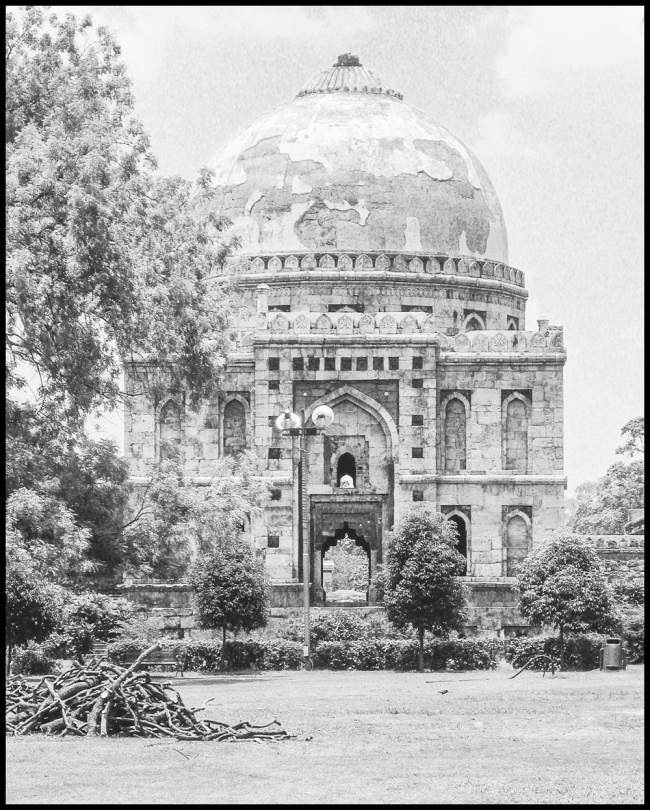I took this picture in New Delhi in 2006. The building where I was working is located in Lodhi Gardens and I went out for lunch with a colleague. We walked for about 5-10 minutes in the garden on our way to a restaurant and along the way passed this building. I had no idea what it was, but it looked interesting so I took a picture.
In browsing through my photographic archives today I came across the picture again and decided to see if I could find out what it is. So I put the address of the UNICEF Office into Google Maps and then browsed around in ‘satellite’ view until I came across a building, which looked like the one in the photograph.
It turns out that it’s called the ‘Bara Gumbad‘ and according to Wikipedia:
Bara Gumbad (literally “big dome”) is an ancient monument located in Lodhi Gardens in Delhi, India. It is part of a group of monuments that include a Friday mosque (Jama Masjid) and the “mehman khana” (guest house) of Sikandar Lodhi, the ruler of the Delhi Sultanate. The Bara Gumbad was constructed in 1490 CE, during the reign of the Lodhi dynasty. Its construction is generally attributed to Sikandar Lodhi, and it is believed to have the earliest constructed full dome of any building in Delhi.
The monument is situated near the Tomb of Sikandar Lodhi and Shisha Gumbad. Although the three structures, which share a common raised platform, were all built during the Lodhi reign, they were not constructed at the same time. The intended purpose of the builders of Bara Gumbad is unclear: it may have been intended as a free-standing tomb, but no tombstone has been identified. The area in which Bara Gumbad is situated was formally called Khairpur village.
Bada Gumbad was constructed in 1490 CE, and is believed to have the earliest constructed full dome of any building in Delhi. Its construction is generally attributed to Sikandar Lodhi. A mihrab (prayer niche) in the Friday mosque (Jama Masjid) of the Bara Gumbad gives the date of construction as 900 AH (Anno Hegirae) of the Islamic lunar calendar.
Including the Bada Gumbad, there are four monuments in the Lodhi Gardens; the other three being Tomb of Sikandar Lodhi, Shisha Gumbad and the tomb of Muhammad Shah (who belonged to the Sayyid dynasty). The Bada Gumbad is situated approximately 400 metres (1,300 ft) southwest of the tomb and 75 metres (246 ft) south of Shisha Gumbad. During the rule of Sikander Lodhi, the Bara Gumbad, the adjacent mosque and the “mehman khana” (guest house) were constructed. The Bara Gumbad is speculated to serve as a gateway to the Friday mosque. However owing to the constitutions date, placement and stylistic differences the theory of gateway is not supported. The purpose and significance of the Bara Gumbad is unknown and to date remains a mystery. The Friday mosque was constructed in 1494 CE. It was the first mosque to be built in a style that first appeared during the Lodhi Dynasty.
Some historians suggest that the Bara Gumbad was built by an unidentified noble in 1490 CE, before being appropriated by Sikander Lodhi in 1494 CE, to provide an entryway to his mosque. Initially, all the monuments were built independently, and were not in one confine. In the early twentieth century, a park was developed, bringing the four monuments in one confine. The park was inaugurated on 9 April 1936 by Lady Willingdon, the wife of Viceroy Lord Willingdon. The park was originally called the Lady Willingdon Park after her, but was renamed to Lodhi Gardens after independence of India in 1947.
Taken with a Canon Powershot S50.

